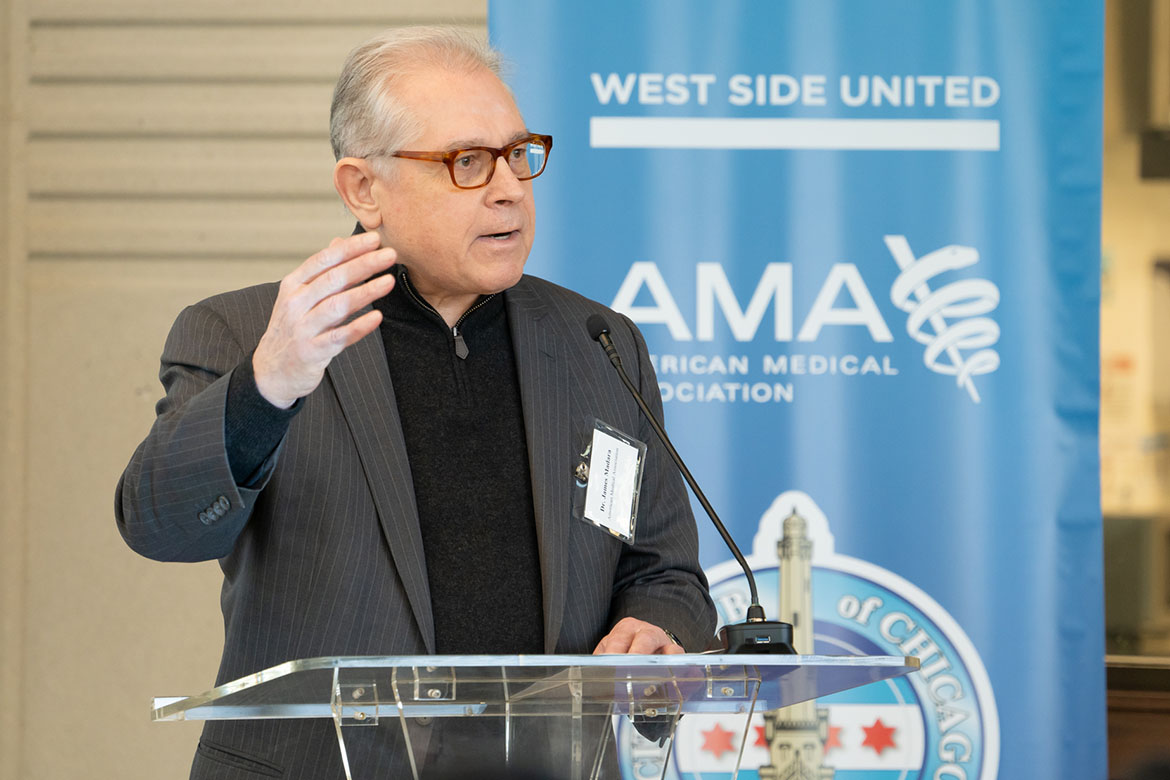Opportunity and equity are tied together. That is the logic behind the partnership between the AMA and West Side United, an organization that makes strategic investments aimed at improving the health and economic vitality of Chicago’s West Side neighborhoods.
The recent announcement of the AMA’s additional $3 million investment in West Side United, coming on top of a $2 million commitment made two years prior, aims to support affordable housing, community spaces and job development across 10 West Side communities.
“We know that the health and vitality of our communities often depend on the support and investment from businesses and organizations, careful planning and coordination with civic and community leaders, faith-based institutions and civic leaders, it requires the partnership of people like us in this room today,”
AMA CEO and Executive Vice President James L. Madara, MD, said during an event that announced the AMA’s latest pledge to West Side United.
Find out why the AMA is investing in Chicago’s West Side to boost health equity.
Investing with a purpose
The event earlier this month announcing the AMA’s continued commitment to West Side United took place at The Hatchery, a thriving community space that shows the value of impact investing.
The 67,000-square-foot incubator caters to entrepreneurs in the food-and-beverage industry. Prior to its creation in 2018, the building had for years been a vacant lot. Now it houses 56 private kitchens, storage space and loading docks, and stands as a model for what can be done to spur opportunity in neighborhoods that have been historically ignored.
“It is the small incubator we find ourselves in that will take on some of these storefronts, that will take on some of the empty lots and bring back some of the vibrancy that stood and still exists in these communities,” said Ayesha Jaco, executive director of West Side United, from a podium in The Hatchery. “West Side United’s aim to improve the quality of life for West Side residents, acknowledging and addressing the life-expectancy gap and the role of structural racism and disinvestment is a tall order—and we cannot do it alone.”
Results in jobs and housing
To date, West Side United partners have invested a combined $177 million in Chicago’s West Side neighborhoods through local procurement, small business grants, and impact investing, including the AMA’s five-year, $5 million investment.
Since 2018, the collaborative’s funding has contributed to nearly 500 low-interest loans to entrepreneurs, small businesses and community-based organizations.
Community development financial institutions leveraged these investments for an additional $28 million to support the West Side community and business projects. The West Side United investments also resulted in the creation and preservation of 420 housing units, as well as the construction and preservation of more than 34,000 square feet of nonprofit and commercial real estate projects. Additionally, these investments have supported 432 construction jobs, preserved 64 local jobs, and created 126 community employment opportunities.
“Our work with West Side United is one small piece to a larger, national strategy by the American Medical Association to advance racial justice and equity in medicine,” Dr. Madara said. “This work is embedded in all that we do, from the policies passed by our House of Delegates, to our state and federal advocacy priorities. From the programs we support, to all the many ways we are working to create and promote a more diverse physician workforce.”
Learn more about the AMA’s work in health equity, which is led by the AMA Center for Health Equity and recognizes that systemwide bias and institutionalized racism continue to contribute to inequities across the U.S. health system. The AMA is fighting for greater health equity by identifying and eliminating inequities through advocacy, leadership and education.




